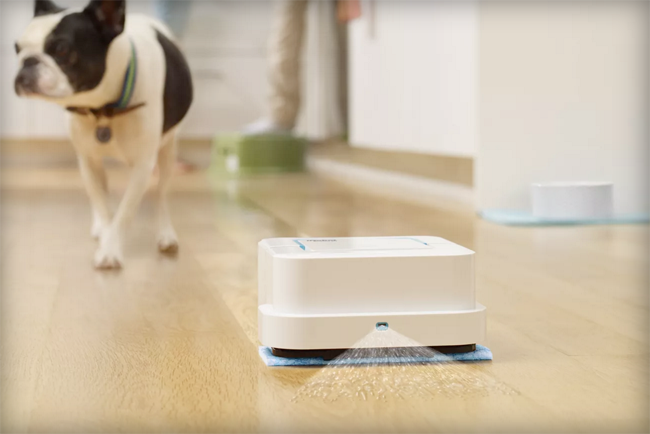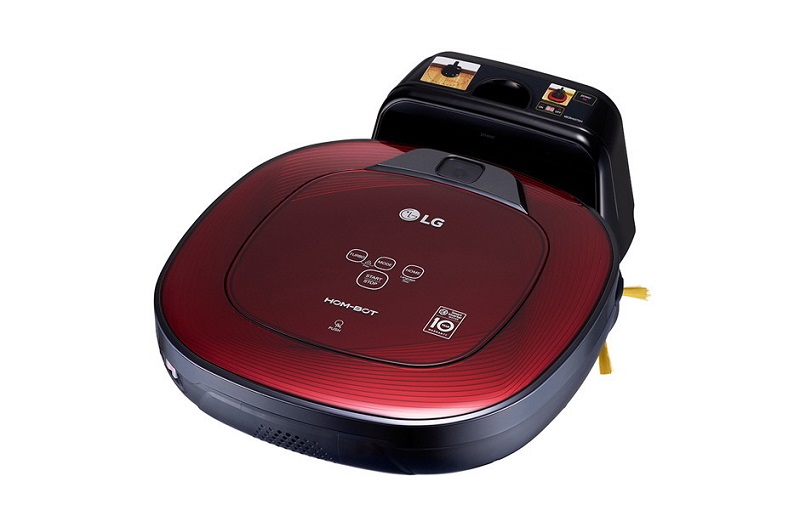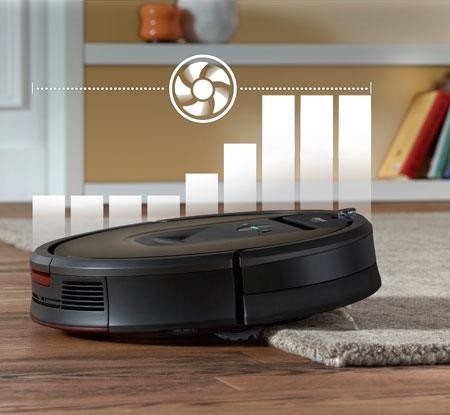Are you still using at home brush, picker and mop? In that case I could tell you that you are a step away from being a technological dinosaur and that I myself could apply that adjective since I still live at home with those utensils whose use we have learned and inherited from parents and grandmothers.
And I say technological dinosaur in an affectionate way, because if there is an element in the kitchen that is coming with an unstoppable force in recent times that is the cleaning robot. An apparatus that many can remember to those machines that ran through the corridors of the ships of Star Wars and that now populate the houses of many users posing autonomously a daily fight against the lint, dust and dirt in general.
Not long ago it was just a brand that dominated the market. We talked about Roomba, so much so that for many the concept of robot cleaner is still assimilated with that brand just like we identified tablet with iPad. However the reality today is quite different and there are many brands that offer products in this field. Good performance devices that test the consumer when deciding on one or the other model.
And is that the case, when deciding on one or the other model, there are a number of considerations to take into account. Aspects in which it is advisable to look for the one that best fits our needs, always clear without losing sight of a basic element such as price.

Previous considerations, factors to be observed
The cleaning robots have experienced an evolution since the first models arrived that offered a performance that, let’s face it, left a lot to be desired. Now the existing ones have improved in functionality and benefits thanks to the inclusion of advanced technologies that help them to optimize their operation. Whether with navigation sensors, dirt level detectors or equipped with ultraviolet light to disinfect surfaces, the variety is huge. So there are a number of aspects, of functions that we can take into account when choosing one or the other model.
Guidance System
The element that determines to a greater extent the autonomy in the tasks of a cleaning robot is the navigation system that equips. And is that thanks to this system will determine the way in which moves to carry out the cleaning.
We find in this sense basic models that move randomly. They strike against an obstacle and with a kind of rebound effect follow the cleaning on the other hand. It is not a smart robot, it does not have navigation system and its performance is smaller but of course, they are cheaper.

In a second step we find models that have an intelligent navigation system thanks to the incorporation of different types of sensors (whether mechanical, acoustic or optical) with which they analyze what surrounds them so that they map their surroundings to move by Without crashing through the different rooms of the home.
And so we reach a third level, the most gifted that offer navigation systems that are also able to determine the amount of dirt. This way you can spend more time working in an area that offers more dirt to eliminate. They are the most expensive models on the market.
You may also like to read another article on SevenFrigo: Robot vacuum cleaner LG Hom Bot Square
We could even determine here a higher level encompassed by those models that have accessories to create virtual walls to move around bounded areas. And is that with these complements can be defined virtually in which areas of the house we do not want our robot to act. We can place the accessory to create that invisible border so that the robot clean for example the living room and bedrooms but do not enter the bathrooms.

Cleaning possibilities
Not all models offer the same cleaning ability. So depending on the mechanisms that incorporate we find some that only clean the dust as if they were a mop while others, more advanced, at the same time even have filters to prevent the dust from spreading.
In addition according to the make and model we will find a large variety in regard to the type of brushes and brushes (roller, brush …) used as well as the arrangement in the apparatus, offering a distribution that can offer better or Worse result.
And next to the way of sucking, we must also study the suction power offered by one or the other model. It is a question of looking for a power that combines with the way of cleaning correctly and is that here also could apply that “power without control is useless.” It does not serve much power if the model does not have an optimal navigation system or a good arrangement of the brushes.

Capacity of the deposit
Another factor to study is the capacity of the deposit to collect the waste. And is that having a robot vacuum cleaner that we have to be every two by three emptying the waste tank does not make much sense.
In this sense we have to evaluate the type of house or room to be cleaned, if it is more or less large, as well as the amount of dirt that is usually accumulated. It is the case of a house with pets, which thanks to the hair they release will require a robot with a greater capacity of storage of waste. What’s more, some more expensive models include a full tank warning that prevents us from having to be outstanding. However, as a general rule, it is best to start with a capacity of 0.400 centiliters.
Autonomy
The workhorse of many devices nowadays that here takes on greater importance. If our house is large we must look for a cleaning robot that offers an autonomy that allows you to work after a full load without having to return to the base. It is true that there are models, most of them, that return to the base automatically when the battery is started to recharge, but the ideal is to have as much autonomy as possible to minimize the time that lasts the cleaning.

It is also a very interesting factor that our robot has the possibility of establishing cleaning programs. It is above all that the robot works autonomously and for this the possibility of establishing programs is important.
In the most basic models we will not find almost this function or if it exists it is too basic. In the more expensive models if we can find a more efficient programming function with which to determine from the hours or days in which to clean and even to program what areas of the house we want to clean at certain times.
Noise
One factor that should not be overlooked is the noise generated in the cleaning and is that many times while the process is taking place we are resting at home. That is why it is interesting to look for a model that generates a low level of noise.
Normally the usual number of a cleaning robot is between 50 and 80 dB, so that the closer that figure to those 50 dB the more comfortable the use of our robot.

Filters you use
We have discussed beforehand and is that when the robot cleans it makes the brushes can lift dust and particles that are added to the suction air stream. In this sense it is important that the robot has a system of filters through which the particles pass and is that although it has a deposit in which the waste is stored, the suction air comes out again and can carry a certain amount of elements.
In this way the integration of filtration systems in a circuit through which the air passes prevents them from re-entering the environment. Something very important to avoid especially breathing problems and allergies so it is advisable to opt for models that make use of a HEPA filter. It is a system that allows to retain and fix particles up to 0.3 μm so that they offer greater cleaning of the air at home.
And once we have seen some basic parameters when it comes to choosing one or the other model, it is the turn of choosing among the catalog of alternatives that we can find in the market, but we leave that already for another article.


